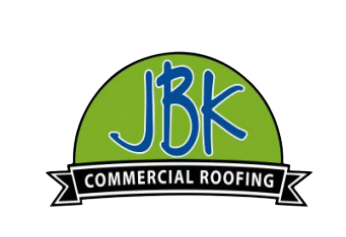Commercial Roofing Terminology
Everything You Need to Know About Commercial Roofing
Aggregate: Water-worn gravel used for surfacing a built up roof.
Algae: a fungus that can stain and damage your commercial roof. Visit our blog to learn more about the importance of cleaning your facility’s roof.
Asphalt: A dark brown or black bituminous substance found in natural deposits or, more commonly, left as a residue from refining petroleum-based substances. It consists primarily of hydrocarbons.
Asphalt Shingle: A roofing shingle that uses asphalt for waterproofing.
Fastener: In roofing, screws and nails are commonly used as fasteners.
Bitumen: A black, viscous liquid or semi-solid form of petroleum. Also known as asphalt.
Blistering: Bubbles that appear on the surface of an industrial roof that could be an indication of trapped moisture or a sign of a more serious roof leak.
Bridging: When membrane or base flashing is unsupported at a juncture.
Boot: A roof boot, also known as plumbing vent boot or pipe boot, is a covering made of flexible material, which may be preformed to a particular shape, used to prevent debris and moisture from entering around a roof penetration.
Building Code: The minimum construction requirements established by local or national governing authorities.
Built-up Roof (BUR): A semi-flexible multi-ply roofing membrane generally composed of alternating layers bitumen and reinforced fabrics.
Butyl Tape: A water-tight sealant tape used between metal roof panel seams and/or end laps.
Carpet Roll: Duro-Last Carpet Rolls are used for cold weather applications to minimize wrinkles.
Caulking: The process of sealing a joint, seam, or juncture to make it weathertight.
Chemical Resistance: The ability of a material to withstand contact with specified chemicals without adverse effect.
Cool Roof: a highly reflective roofing surface that directs a portion of solar heat away from the building, reducing peak energy demand.
Counterflashing: The preliminary defense against water leaks. It’s installed after the base and step flashing.
Course: A row of shingles running horizontally, diagonally, or vertically.
Coping Cap: A covering piece on the top of a parapet wall, usually made of metal, masonry, or stone.
Core Cuts: A series of sample cuts that are taken through the existing roof, typically down to the roof deck, to determine thickness moisture, and condition of the existing roofing system.
Dead Load: Constant, total load on a structure.
Dielectric Welding: Also described as radio frequency welding is the process of fusing or melting two similar or dissimilar flexible materials together.
Dome Strainer: As specified by Duro-Last, it’s a cast aluminum strainer that keeps debris out of a drain boot.
Drain: An outlet on the roof used to collect and direct the flow of water away from the roofing surface.
Edge Details: Rigid edge terminations that help make rooftop perimeters watertight.
Emissivity: A measure of the efficiency in which a surface releases thermal energy.
Escutcheon Washer: A washer used to hide unattractive holes and seal around small penetrations.
Expansion Joint: A structural element designed to relieve stress on building materials by allowing for thermal expansion and contraction without damaging the roofing system.
Flashing: Roofing membrane and/or metal that is used to transition roof membrane to a vertical application such as a wall or roof penetration.
Gutter: A channeled metal trough-like element installed along the downslope perimeter of a roof to direct runoff water away from the roof and building structure.
Hot Pipe: A round roof penetration that maintains a temperature of 110 degrees Fahrenheit or more.
Ice Dams: An ice dam is a ridge of ice that can form on the edge of a roof and prevent snow and water from running off a roof. Preventative maintenance can help minimize or prevent damage caused by severe weather.
KRCA: Kentucky Roofing Contractors Association.
LEED Certification: Leadership in Energy and Environmental Design is a rating system developed by the United States Green Building Council to evaluate the environmental performance of a building.
Membrane: A flexible or semi-flexible roof covering or waterproofing whose primary function is to prevent water penetration.
Metal Anchors: Also known as a molly bolt. These zinc-plated devices are designed to be driven into a hole and set with a hammer.
Metal Retrofit: A metal retrofit roofing system is a prefabricated, single-ply membrane that protects your commercial roof from ice buildups, leaks, rust, and more.
Monolithic: Formed from or composed of a single material.
NRCA: National Roofing Contractors Association.
Overdriven: An improperly driven screw that can lead to premature roof leaks.
Parapet Wall Flashing: Custom flashing made for a wall on a roof.
Positive Drainage: Slope that has been designed to ensure optimal drainage.
Pitch Pocket: A sheet metal or membrane sleeve flashed into the roofing membrane to seal roof penetrations.
Pull Test: A mechanical test to determine the amount of force it takes to pull a roof fasteners out of a roof deck; or pull off an adhered roof component, such as membrane, from an underlying roof substrate.
Reflectivity: The higher a roof’s reflectivity, the more it deflects the sun’s radiation.
Scupper: A drainage device installed through a wall, parapet wall or raised roof edge.
Sealant: Caulk or other waterproofing material used to seal cracks and seams.
Separator: A device that keeps two non-compatible materials from coming into contact.
Single-ply Membranes: There are a number of materials used for single-ply membranes including PVC (polyvinyl chloride), EPDM (ethylene propylene diene monomer), Hypalon CSPE (chlorosulfonated polyethylene), TPO (thermoplastic polyolefin).
Slipsheet: A separator sheet placed between the Duro-Last roof assembly and a non-compatible component on the existing roof to ensure that corrosion or possible damage from chemical reactions does not occur.
Solar Reflectance Index (SRI): The SRI combines reflectivity and emittance to measure a roof’s overall efficiency.
Substrate: Can be many components that underlay the exposed roof membrane including rigid insulation boards, rigid recovery board, decking, or a prior existing roof that has be recoverd.
Tear-off: If total tear-off then, remove all roofing materials down the roof decking. If partial tear-off then tear-off may only include the top membrane and/or additional layers of membrane and substrate boards.
Thermoplastic Membrane: A type of roofing used primarily in flat or nearly flat roofs. PVC and TPO membranes are considered thermoplastic membrane.
Tie-In: A transitional seal usually used to terminate two more dis-similar roof membranes either temporarily or permanently.
Two-way Air Vent: These vents are designed to improve performance in Duro-Last roofs by eliminating negative air pressure by allowing airflow thru out the roof installation.
Ultraviolet: These invisible and harmful rays can damage roofing materials and increase degradation.
Underlayment: A sheet material that is used to separate the roof deck and the roof system.
Vents/Pipe Stacks: Round penetrations through the roof deck.
Wind Load: The “load” or force exerted by the wind and its speed and air density on a building.
Wind Uplift: The force in pounds per square foot that occurs when the pressure below a roof is greater than that above it.

